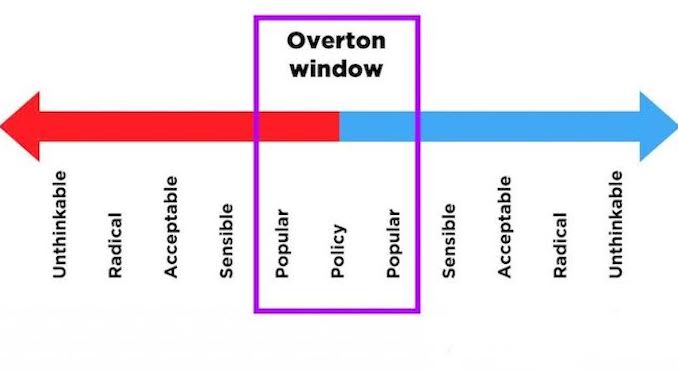Kerby Anderson
Often political articles are written by writers who assume the reader understands all the phrases they use. One of the phrases being used quite often is the “Overton Window.” The other day, someone in my Sunday School class asked what the Overton Window means. I thought it would be good to explain that. Fortunately, Joseph Lehman has done that in a recent article.
The phrase comes from a colleague of his, Joseph Overton. It is an attempt to explain a feature of the lawmaking process. Every public policy can be arranged on a scale. One example would be taxes. “At one end is 100 percent taxation, and zero percent defines the other end. All other tax rates are in between, in numerical order.”
On the other hand, lawmakers are constrained. “They can’t cast votes for any policy they like, as if they’re ordering dessert from a menu. They are constantly mindful of what the public will accept.”
The upper and lower policy bounds, what the voting public might accept, would be the Overton Window. It is “safe” for the legislator to vote for something inside the window. You could risk defeat at the next election if you voted for something outside the window.
Once you understand the concept, you can also see how the Overton Window changes over time. Joseph Lehman argues correctly that the pandemic slammed the Overton Window downward toward more government control. Some examples he used are the “mass suppression of civil liberties” which included “forced closures, mask mandates, gathering restrictions, [and] travel bans.”
If you are concerned about this loss of liberties, then you can also work to move the Overton Window back to where it was. In fact, I predict that some of that will take place during the 2022 elections.
 Listen Online
Listen Online Watch Online
Watch Online Find a Station in Your Area
Find a Station in Your Area










 Listen Now
Listen Now Watch Online
Watch Online
